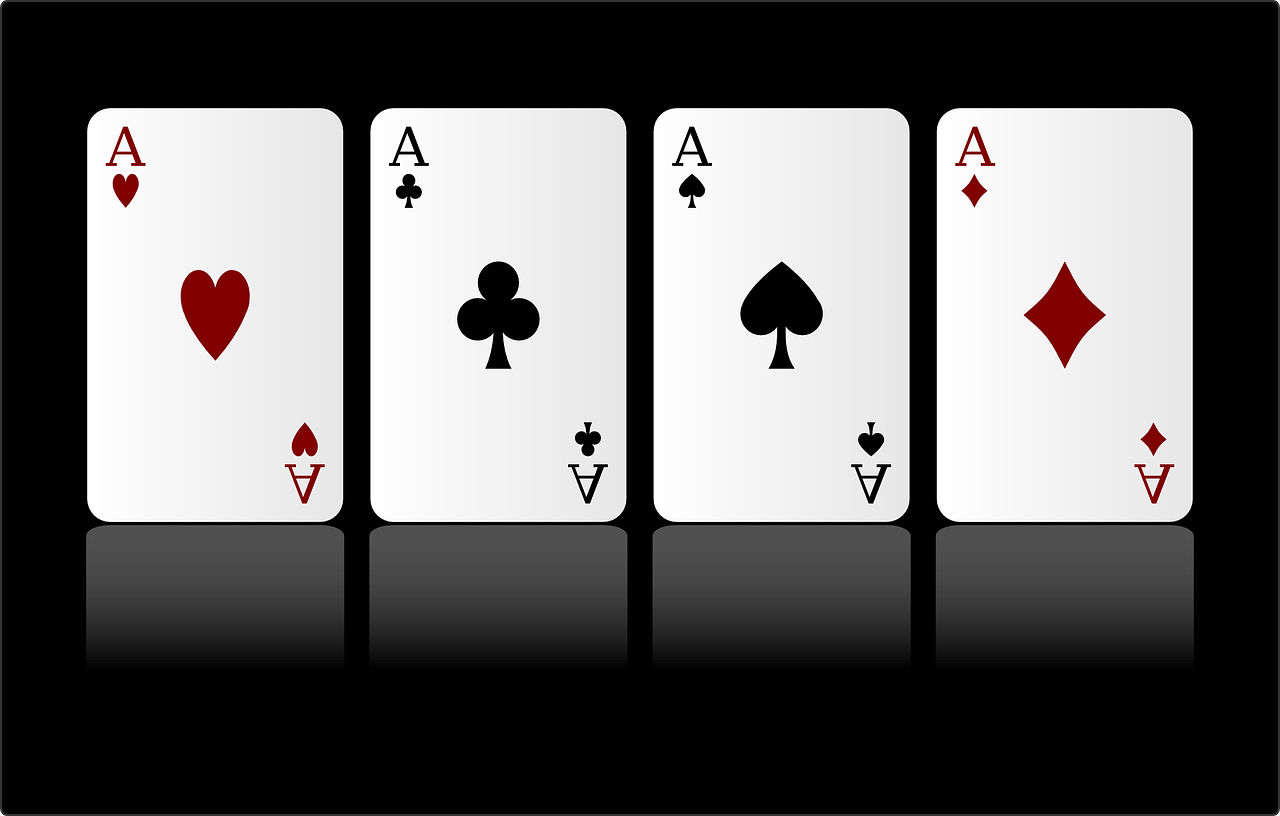Mastering the math behind poker is essential for any serious player looking to improve their odds of winning. Understanding the probabilities and odds involved in each hand can help players make more informed decisions and ultimately increase their chances of success. In this article, we will explore some of the key mathematical concepts that every poker player should know in order to improve their game.
The Importance of Probability in Poker: How to Calculate Your Odds

Poker is a game of skill, strategy, and luck. While you can’t control the cards you’re dealt, you can control how you play them. One of the most important skills in poker is understanding probability and how to calculate your odds. By mastering the math behind poker, you can improve your chances of winning and make better decisions at the table.
The first step in understanding probability in poker is to know the basic math. There are 52 cards in a deck, and each card has a unique value and suit. There are four suits: hearts, diamonds, clubs, and spades. Each suit has 13 cards, ranging from Ace to King. This means that there are 13 cards of each suit, and 52 cards in total.
When you’re playing poker, you need to know the probability of certain cards being dealt. For example, if you’re holding two cards of the same suit, you need to know the probability of getting a third card of that suit on the flop, turn, or river. To calculate this, you need to know how many cards are left in the deck that could help you, and how many cards are left in the deck in total.
Let’s say you’re holding two hearts, and there are two hearts on the flop. There are 9 hearts left in the deck, and 47 cards left in total. This means that your odds of getting a heart on the turn are 9/47, or about 19%. If you don’t get a heart on the turn, your odds of getting a heart on the river are 9/46, or about 20%.
Another important concept in poker probability is outs. Outs are the cards that could improve your hand. For example, if you’re holding a pair of 7s, and there are two 7s on the flop, you have two outs – the two remaining 7s in the deck. To calculate your odds of getting one of these outs, you need to know how many cards are left in the deck that could help you, and how many cards are left in the deck in total.
Let’s say there are 40 cards left in the deck, and you have two outs. Your odds of getting one of these outs on the turn are 2/40, or about 5%. If you don’t get one of these outs on the turn, your odds of getting one of these outs on the river are 2/39, or about 5%.
Understanding probability in poker is essential for making good decisions at the table. By knowing your odds of getting certain cards, you can make informed decisions about whether to call, raise, or fold. For example, if you’re holding a flush draw, and the pot odds are in your favor, it might be worth calling a bet to see if you can hit your flush on the turn or river.
In addition to understanding probability, it’s also important to understand pot odds. Pot odds are the ratio of the size of the pot to the size of the bet. For example, if there is $100 in the pot, and your opponent bets $20, the pot odds are 5:1. This means that you need to win the hand at least 1 out of 5 times to break even.
By combining your knowledge of probability and pot odds, you can make better decisions at the table. For example, if you have a flush draw, and the pot odds are in your favor, it might be worth calling a bet to see if you can hit your flush on the turn or river. On the other hand, if the pot odds are not in your favor, it might be better to fold and wait for a better opportunity.
Mastering the math behind poker is essential for improving your odds and making better decisions at the table. By understanding probability and pot odds, you can make informed decisions about whether to call, raise, or fold. While luck will always play a role in poker, by mastering the math, you can give yourself the best chance of winning.
Mastering Pot Odds: A Key Skill for Winning at Poker
To understand pot odds, let’s take an example. Suppose you are playing a game of Texas Hold’em, and the pot has $100. Your opponent bets $20, and you have to decide whether to call or fold. In this scenario, the pot odds are 100:20 or 5:1. This means that for every $1 you put in, you can win $5. If you think you have a better hand than your opponent, you should call the bet as the pot odds are in your favor.
Calculating pot odds is not difficult. You need to know the size of the pot and the amount of money you need to call. Once you have these two numbers, you can calculate the pot odds. For example, if the pot has $100, and your opponent bets $20, the pot odds are 5:1. If your opponent bets $50, the pot odds are 3:1.
Pot odds can help you make better decisions in the game. If the pot odds are in your favor, you should call the bet. If the pot odds are against you, you should fold. For example, if the pot has $100, and your opponent bets $100, the pot odds are 2:1. This means that for every $1 you put in, you can win $2. If you think you have a 50% chance of winning the hand, you should call the bet as the pot odds are in your favor.
Pot odds can also help you determine the size of your bet. If the pot odds are in your favor, you should bet more to increase the size of the pot. For example, if the pot has $100, and the pot odds are 5:1, you should bet $20 to increase the size of the pot. This will make it more attractive for your opponents to call, and you can win more money.
Mastering pot odds is a key skill for winning at poker. Understanding pot odds can help you make better decisions, determine the size of your bet, and improve your chances of winning. Calculating pot odds is not difficult, and with practice, you can master this skill. Remember, poker is a game of skill, strategy, and luck. By mastering pot odds, you can improve your odds of winning and become a better poker player.
Using Expected Value to Make Better Decisions in Poker
Expected value is a mathematical concept that measures the average outcome of a situation over time. In poker, it’s the amount of money you can expect to win or lose on average in a particular hand or situation. By understanding and using EV, you can make better decisions and improve your odds of winning.
To calculate EV, you need to consider two factors: the probability of winning and the amount of money at stake. For example, let’s say you’re playing a hand of Texas Hold’em, and you have a flush draw on the turn. There are nine cards left in the deck that will complete your flush, and 47 cards that won’t. The probability of hitting your flush on the river is approximately 19%.
If there’s $100 in the pot, and your opponent bets $50, you need to decide whether to call or fold. To calculate the EV of calling, you multiply the probability of winning (19%) by the amount you stand to win ($150, which includes the pot and your opponent’s bet). The result is $28.50. This means that, on average, you can expect to win $28.50 if you call.
However, you also need to consider the EV of folding. If you fold, you lose your $50 bet, but you don’t risk any more money. The EV of folding is zero. So, if the EV of calling is greater than zero, it’s a profitable decision to call.
Of course, EV calculations can be more complex than this example, especially in multi-way pots or when facing different bet sizes. But the basic principle remains the same: you need to weigh the probability of winning against the amount of money at stake to make the best decision.
Using EV in poker requires a solid understanding of probability and basic math skills. But it’s not just about crunching numbers. It’s also about understanding your opponents’ tendencies, reading their body language, and making informed decisions based on all available information.
One of the best ways to improve your EV calculations is to practice. Start by analyzing your past hands and decisions, and try to identify where you could have made better choices based on EV. You can also use online poker calculators to help you with the math.
Another important aspect of using EV in poker is bankroll management. Even if you make the best decisions based on EV, you can still experience short-term losses due to luck. That’s why it’s crucial to have a solid bankroll management strategy that allows you to weather the ups and downs of the game.
Understanding the math behind poker and using expected value to make better decisions can significantly improve your odds of winning. It’s not just about luck or intuition – it’s about understanding the probabilities and making informed choices based on all available information. With practice and discipline, you can become a more skilled and successful poker player.
The Role of Game Theory in Poker Strategy
Game theory is a mathematical framework used to analyze decision-making in situations where multiple players are involved. In poker, game theory can be used to determine the optimal strategy for any given situation. By understanding the underlying math behind the game, players can make more informed decisions and improve their odds of winning.
One of the key concepts in game theory is the Nash equilibrium. This is a state in which no player can improve their outcome by changing their strategy, assuming all other players are also playing optimally. In poker, the Nash equilibrium can be used to determine the optimal range of hands to play from each position at the table.
For example, let’s say you’re playing in a no-limit hold’em game with nine players at the table. You’re in middle position with a hand like A-10 suited. Using game theory, you can determine the optimal range of hands to play from this position based on the actions of the players before and after you.
Assuming the players before you have folded, and the players after you will call or fold based on the strength of their own hands, the Nash equilibrium range for middle position in this scenario might be something like A-10 suited, K-Q suited, 8-8, and A-J offsuit. By playing only hands within this range, you can ensure that you’re making the most mathematically sound decisions possible.
Of course, game theory is just one tool in a poker player’s arsenal. It’s important to remember that every hand is unique, and there are many factors that can influence the optimal strategy in any given situation. For example, the size of the pot, the stack sizes of the players involved, and the tendencies of your opponents can all play a role in determining the best course of action.
That said, having a solid understanding of game theory can help you make more informed decisions and improve your overall win rate. By studying the math behind the game, you can gain a deeper understanding of the underlying principles that govern poker strategy.
If you’re new to game theory, there are many resources available to help you get started. Books like “The Mathematics of Poker” by Bill Chen and Jerrod Ankenman provide a comprehensive overview of the math behind the game, while online forums and training sites can help you connect with other players and learn from their experiences.
Ultimately, mastering the math behind poker is a lifelong pursuit. There’s always more to learn, and the game is constantly evolving. But by taking the time to study game theory and other mathematical concepts, you can give yourself an edge over your opponents and improve your odds of winning in the long run.
How to Analyze Your Poker Hands Using Math and Improve Your Game

The first step in analyzing your poker hands using math is to understand the concept of pot odds. Pot odds refer to the ratio of the amount of money in the pot to the amount of money you need to call to stay in the game. For example, if there is $100 in the pot, and you need to call $20 to stay in the game, the pot odds are 5:1. To calculate the pot odds, you need to divide the total pot size by the amount you need to call.
Once you have calculated the pot odds, you need to compare them to your hand odds. Hand odds refer to the probability of making a winning hand based on the cards you have and the cards that are still to come. For example, if you have a flush draw, there are nine cards left in the deck that can complete your flush. Therefore, your hand odds are approximately 4:1 against making your flush.
To determine whether it is profitable to call a bet, you need to compare your pot odds to your hand odds. If your hand odds are better than your pot odds, it is profitable to call the bet. If your pot odds are better than your hand odds, it is not profitable to call the bet.
Another important concept in analyzing your poker hands using math is expected value (EV). EV refers to the average amount of money you can expect to win or lose on a particular hand over the long run. To calculate the EV of a hand, you need to multiply the probability of winning by the amount you can win and subtract the probability of losing by the amount you can lose.
For example, if you have a flush draw with nine outs, your probability of making your flush is approximately 35%. If the pot is $100, and your opponent bets $20, your EV is calculated as follows:
EV = (0.35 x $120) – (0.65 x $20) = $42 – $13 = $29
This means that over the long run, you can expect to win $29 on this hand.
In addition to pot odds, hand odds, and EV, there are other mathematical concepts that can help you analyze your poker hands, such as implied odds, reverse implied odds, and fold equity. Implied odds refer to the additional money you can win if you make your hand. Reverse implied odds refer to the additional money you can lose if you make your hand but still lose the pot. Fold equity refers to the probability that your opponent will fold to your bet.
By mastering the math behind poker, you can make better decisions, improve your odds, and increase your chances of winning. However, it is important to remember that poker is not just a game of math. It is also a game of psychology, observation, and intuition. Therefore, it is essential to balance your mathematical analysis with your other skills and experience.
In conclusion, analyzing your poker hands using math is an essential skill that every poker player should master. By understanding pot odds, hand odds, EV, and other mathematical concepts, you can make better decisions, improve your odds, and increase your chances of winning. However, it is important to remember that poker is not just a game of math. It is also a game of psychology, observation, and intuition. Therefore, it is essential to balance your mathematical analysis with your other skills and experience.
